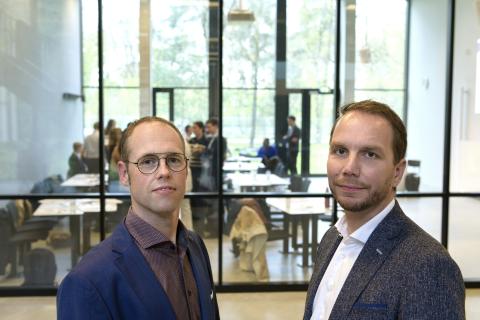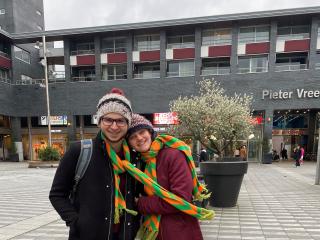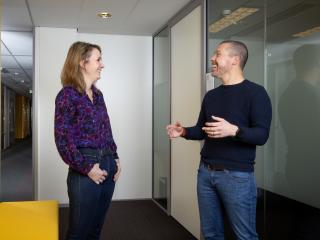Working together successfully and in a pleasant atmosphere? Stop with the 'blame game’
Irritations, poor cooperation and disappointing results in the workplace often stem from the same recurring patterns, say organizational scientists Hans van Dijk and Stefan Cloudt. Together, they conduct research into workplace dynamics. "One of the most occurring patterns, is what we call the 'blame game.' People are quick to look for someone to blame, but do not critically look at their own part. By blaming others, and not changing yourself, problems will persist.”
The blame game stands out, because we see it being played in public on a regular basis. Think of recent events in the Dutch media, concerning transgressive behavior. Dutch sports presenter Jack van Gelder blamed the board of the Dutch Broadcasting Agency for not intervening, after he himself was accused of transgressive behavior in the past. Or media mogul John de Mol who put the ball in women's court to report transgressive behavior. Cloudt: "What makes it extra difficult is that the blame game affects the necessary self-reflection. In workplace dynamics, there is always someone else involved. This makes it very convenient for each person to blame someone else for any negative dynamic and corresponding consequences. This is also what we see with Jack van Gelder and John de Mol. Even when they are asked to reflect, the tendency to look for others to blame remains."

Destructive dynamics have a harmful impact on collaboration and results, but also on individuals
Associate Professor Hans van Dijk
Destructive dynamics
The blame game phenomenon is an example of what Hans van Dijk and Stefan Cloudt have come to call "destructive dynamics”. The idea for this arose during a course they teach together, in which students work together on a series of assignments in a simulated work environment. During the simulations, the researchers saw the same behaviors recurring that caused students to fail in their assignments.
Hans van Dijk: "Destructive dynamics have a harmful impact on collaboration and results, but also on individuals. We mapped which dynamics we could distinguish and how they arise. On this basis, we arrived at nine destructive dynamics that can considerably ruin the atmosphere in a workplace. Consider, for example, a critical and performance-oriented environment that makes employees insecure and makes them afraid to take risks. Another common dynamic is the "us-versus-them" feeling and polarization in the workplace. This often arises in a competitive environment where groups of employees and departments compete with each other for resources and power in the organization."
“We aim to help management and HR professionals to recognize and interpret patterns within their own organizations”
Book
Hans van Dijk and Stefan Cloudt compiled the insights from research and their experiences in a new book entitled "Destructive Dynamics”. The goal is to help management and HR professionals recognize and interpret interaction patterns within their own organizations. Van Dijk and Cloudt: "As famous football player Johan Cruijff once said, 'You only see it when you understand it.' Understanding destructive dynamics helps to understand what you are dealing with. Only then you can start working on solutions. With better cooperation and a more pleasant working atmosphere as a result."
“Negative patterns are not always easy to recognize and even harder to break”
Recognize and acknowledge
This is easier said than done, as the negative patterns are not always easy to recognize and even harder to break. So how do you do this? Cloudt: "It is important to specify the problem: what exactly are we dealing with? That provides insight into where the behavior comes from that leads to those problematic interaction patterns. An important contribution of this book, then, is to help organizations recognize the different dynamics and associated idiosyncrasies. Often people do realize that there are some problematic dynamics, but because we do not have a language for them, it is very difficult to put our finger on them. We hope to change that."
Van Dijk adds: "Once a dynamic has been identified, it is important to reflect on one's own role in it. To break a destructive dynamic, we must stop reacting primitively to feelings and instead reflect on the situation and our own behavior first. Much behavior stems from emotion and is an automatic response to a situation. You must try to become aware of your primary reactions, of your natural behavior. And when you recognize that you yourself also play a role in a destructive dynamic, it opens the door to unlearn that behavior."
Also in Tilburg University Magazine
Date of publication: 2 May 2023



